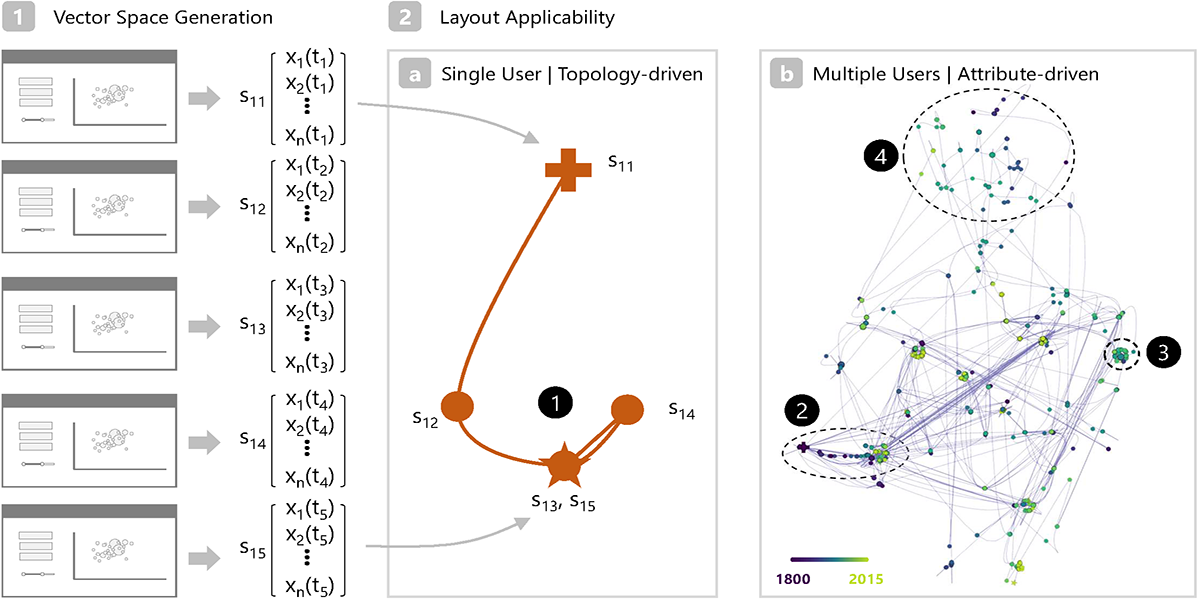
Abstract
Understanding user behavior patterns and visual analysis strategies is a long-standing challenge. Existing approaches rely largely on time-consuming manual processes such as interviews and the analysis of observational data. While it is technically possible to capture a history of user interactions and application states, it remains difficult to extract and describe analysis strategies based on interaction provenance. In this paper, we propose a novel visual approach to the meta-analysis of interaction provenance. We capture single and multiple user sessions as graphs of high-dimensional application states. Our meta-analysis is based on two different types of two-dimensional embeddings of these high-dimensional states: layouts based on (i) topology and (ii) attribute similarity. We applied these visualization approaches to synthetic and real user provenance data captured in two user studies. From our visualizations, we were able to extract patterns for data types and analytical reasoning strategies.
Citation
Conny
Walchshofer,
Andreas
Hinterreiter,
Kai Xu,
Holger
Stitz,
Marc
Streit
Provectories: Embedding-based Analysis of Interaction Provenance Data
IEEE Transactions on Visualization and Computer Graphics (Early Access),
doi:10.1109/TVCG.2021.3135697, 2021.
BibTeX
@article{2020_preprint_provectories,
title = {Provectories: Embedding-based Analysis of Interaction Provenance Data},
author = {Conny Walchshofer and Andreas Hinterreiter and Kai Xu and Holger Stitz and Marc Streit},
journal = {IEEE Transactions on Visualization and Computer Graphics (Early Access)},
doi = {10.1109/TVCG.2021.3135697},
month = {December},
year = {2021}
}
Acknowledgements
We would like to thank Kiran Gadhave and Alexander Lex for providing us with interaction provenance data for the second use case and for answering our questions. This work was supported by the FFG, Contract No. 881844: “Pro\textsuperscript{2}Future is funded within the Austrian COMET Program Competence Centers for Excellent Technologies under the auspices of the Austrian Federal Ministry for Climate Action, Environment, Energy, Mobility, Innovation and Technology, the Austrian Federal Ministry for Digital and Economic Affairs and of the Provinces of Upper Austria and Styria. COMET is managed by the Austrian Research Promotion Agency FFG.” Additional support was granted by the Federal State of Upper Austria and the Austrian Federal Ministry of Education, Science and Research via the LIT – Linz Institute of Technology (LIT-2019-7-SEE-117), and by the Federal State of Upper Austria (Human-Interpretable Machine Learning).




